#narrative
Explore tagged Tumblr posts
Text
Steps to Writing an Enemies-to-Friends Relationship (No Romance or Sensual Tension)

follow for more tips 💋 || request writing tips 💌
1. Establish the Foundation
Define the Conflict: Clarify why these characters are enemies. Is it ideology, personal betrayal, competition, prejudice, or circumstance? The conflict should feel justified on both ends. Set Clear Boundaries: From the beginning, eliminate any hints of romantic tension. No suggestive dialogue, no lingering glances, no "will-they-won't-they" teases. Give Them Equal Strengths: Avoid power imbalances that suggest dominance or attraction. Their friction should stem from their beliefs, goals, or past—not unspoken desire.
2. Shape Their Role in the Story
Decide Their Narrative Purpose: Will they have to work together against a common enemy? Do they grow from rivalry to mutual respect? Determine how their evolving dynamic impacts the plot. Avoid Romantic Substitutes: Don’t use tropes like “angry confessions that turn into vulnerability” unless it’s clearly platonic. Let their growth come from empathy, not emotional seduction. Let Their Bond Matter: Their friendship should hold weight in the narrative. Make it feel just as powerful as romantic ones—without relying on attraction.
3. Build Their Dynamic
Use Natural Conflict-Resolution: Let them argue, clash, and call each other out. Gradually, introduce grudging respect and understanding. Highlight Differences and Growth: Show how their perspectives shift over time. Let their values clash, then overlap, then align. Allow Emotional Honesty (Platonically): Let them share personal experiences or open up over time.
4. Define Their Chemistry
Make Their Interactions Unique: Their banter, teamwork, or verbal spars should be distinctly non-romantic — more like frenemies turned allies or siblings who used to fight. Focus on Respect Over Intimacy: They may not like each other at first, but they come to respect each other’s strength, skill, or heart. Use Physical Space Wisely: Keep physical contact platonic or avoid it altogether. A handshake, a nod, a slap on the back — nothing coded with longing.
5. Demonstrate Their Impact on Each Other
Let Them Grow Together: Show how they push each other to improve. Maybe one learns humility, the other compassion. Create High-Stakes Collaboration: Put them in situations where they have to trust each other. Show how tension gives way to reliability. Allow Disagreements Without Regression: They can argue again even after becoming friends — just without regressing into hatred or falling into flirtation.
6. Develop a Satisfying Arc
Decide Their Long-Term Dynamic: Will they become close friends, uneasy allies, or respectful rivals? Make sure the conclusion fits their journey. Showcase Their Changed Perspective: Their friendship should feel earned. Use flashbacks or contrasts to show how far they’ve come. Avoid Subtext: Don’t write in lingering glances, “maybe if things were different” lines, or vague emotional ambiguity. Platonic means platonic.
Examples of Strong Enemies-to-Friends Relationships
Film/TV Examples:
Zuko & Aang (Avatar: The Last Airbender): From hunted enemies to one of the most supportive friendships in animation.
Magneto & Professor X (X-Men): Ideological enemies who respect each other deeply, even when at odds.
Shrek & Donkey (Shrek): Donkey annoys Shrek into eventual friendship—zero romance, just stubborn growth.
Literature Examples:
Brutus & Cassius (Julius Caesar): Complicated enemies-turned-collaborators, bound by politics, not love.
Nikki Maxwell and MacKenzie Hollister (Dork Diaries): Originally disdainful of each other, they become friends through shared enemies and interests.
Claire Warden & Butch Betcher (The Guardians of Camoria series): Once bitter enemies due to opposing beliefs and temperaments, their mutual goals and personal growth foster a tough-but-loyal alliance rooted in shared trauma and witty banter, not romance.

Follow || Like || Comment || Repost || My Novel ⇚⇚⇚


thank you, i am farkle :)
thank you @stardustcasti for the request :)
#౨ৎ a.a.walker's tips ౨ৎ#writer#writers on tumblr#creative writing#booklr#academia#aspiring author#nostalgia#artists on tumblr#on writing#college#on writers#writing tips and tricks#writing help#writing advice#writing resources#writing tips#how to write#writing stuff#fiction writing#writing community#writers life#writblr#writers of tumblr#writing tools#storytelling#narrative#publishing#fiction#author
23 notes
·
View notes
Text
"She Writes in Multiple Genres" Aesthetic

Loves books but doesn't read as she used to
Professional in random research
The friendliest bitch you will ever meet
Always tired but never sleeps
Never sticks to one idea
Writing prompts are a god-send
"What's your story about?" "Um, actually…."
Would be an excellent teacher if they had the confidence
Used to be being lonely
50/50 chance she has glasses but hates wearing them
Has TERRIBLE handwriting
Is both logical and creative
Writes better than she speaks
Monthly subscription to imposters syndrome
ABSOLUTELY HATES EDITING
Always the odd one out. ALWAYS.
Has the strange talent to combine two supposedly unrelated genres together
Broke but has expensive taste
Google history is surprisingly (somewhat) normal
Early mornings 🤝 Late nights
A mixture of dark and chaotic academia
Always 'almost done', never 'finished'
Does more thinking about the story than actually writing it
Has 15 unfinished drafts but refuses to delete them
#writing#mood board#teen writer#writing struggles#writers on tumblr#writers#writeblr#ao3 writer#writers and poets#writers life#writerscommunity#writing community#creative writing#female writers#genres#storytelling#fiction#narrative#literature#aesthetic#chaotic academia
24 notes
·
View notes
Text
Do writing exercises actually help?
No one can teach you the art of storytelling.
I believe this because each of us is different from one another. And to make a story is to conspire with the source of that difference, the soul, the heart, the subconscious.
Sure, you can watch a video or read a book about storytelling. But can you risk losing the chance to reach your own way of creating a story?
Take someone else’s road, and it’ll be their way from now on, not yours. And that’s the highest tragedy.
But what about writing exercises?
Yes, they can be made by someone else. But that won’t affect your natural and inherent storytelling. In fact, the proper exercise can enhance your storytelling.
Take one of my favorites, for example, by Ernest Hemingway.
You start with a scene or situation in mind. Then you describe the scene using your words, using all your senses. You make the situation clear as day, as if another can feel and see what you’ve felt and seen exactly the same way.
This exercise doesn’t tell you to do X, Y, and Z for every situation—it only serves as instructional guidelines to get you started.
You could describe the colours of a landscape. You can paint a minimalist picture of a small apartment room, with your words, of course. It’s not about someone telling you to do this in every scenario. It won’t formalize your storytelling. It can only show you the river so you can fish for yourself.
So, do writing exercises help?
My belief? They are a superior alternative to informal or formal so-called education, of storytelling.
They’re natural. They allow room for self-expression and give you enough time to wrestle with yourself in the dismal challenge of finding your own path to storytelling.
What do you think?
#writing#writers on tumblr#writingcommunity#tumblr writers#writerlife#writingjourney#writing tips#creative writing#writingstruggles#writeblr#storytelling#narrative#short stories#fiction#writers
23 notes
·
View notes
Text
Writing Tips Master Post
Edit: Some posts may be deleted
Character writing/development:
Character Arcs
Making Character Profiles
Character Development
Comic Relief Arc
Internal Conflict
Character Voices
Creating Distinct Characters
Creating Likeable Characters
Writing Strong Female Characters
Writing POC Characters
Building Tension
Writing Grumpy x Sunshine Tropes
Writing Sexuality & Gender
Writing Manipulative Characters
Writing Mature Young Characters
Plot devices/development:
Intrigue in Storytelling
Enemies to Lovers
Alternatives to Killing Characters
Worldbuilding
Misdirection
Things to Consider Before Killing Characters
Foreshadowing
Narrative (+ how to write):
Emphasising the Stakes
Avoid Info-Dumping
Writing Without Dialogue
1st vs. 2nd vs. 3rd Perspective
Fight Scenes (+ More)
Transitions
Pacing
Writing Prologues
Dialogue Tips
Writing War
Writing Cheating
Writing Miscommunication
Writing Unrequited Love
Writing a Slow Burn Btwn Introverts
Writing Smut
Writing Admiration Without Attraction
Writing Dual POVs
Worldbuilding:
Worldbuilding: Questions to Consider
Creating Laws/Rules in Fantasy Worlds
Book writing:
Connected vs. Stand-Alone Series
A & B Stories
Writer resources:
Writing YouTube Channels, Podcasts, & Blogs
Online Writing Resources
Outlining/Writing/Editing Software
Translation Software for Writing
Writer help:
Losing Passion/Burnout
Overcoming Writer's Block
Fantasy terms:
How To Name Fantasy Races (Step-by-Step)
Naming Elemental Races
Naming Fire-Related Races
How To Name Fantasy Places
Ask games:
Character Ask Game #1
Character Ask Game #2
Character Ask Game #3
Miscellaneous:
Writing Tips
Writing Fantasy
Miscommunication Prompts
Variety in Sentence Structure (avoiding repetition)
#masterlist#masterpost#writeblr#writing#writing tips#writing advice#writing help#writing resources#author resources#writer resources#creative writing#character writing#character development#plot development#narrative#book writing#writers block#writer stuff#writer things#fantasy writing#writer ask game#deception-united
27K notes
·
View notes
Text
It's always risky killing off a character but if you have to, you must have them HAUNT the narrative. Let their death and absence be constantly felt at some level.
#writing advice#creative writing#writing process#writing#writers#writers on tumblr#writeblr#character death#narrative#character writing
7K notes
·
View notes
Photo


"A Day for Destroying Things" by Katy Batsel
1K notes
·
View notes
Text
I’ve only seen it once so forgive me for not saying more—
—but my favorite sequence is by far the part where ROZ is watching Brightbill finally take flight, and she looks up to try and see him as he gets farther away, but then her view of Brightbill is blocked by the pop-up screen saying “Task Complete.”
And she has to rush after him to get her final look, because of that. Because the Task was getting in the way of her seeing him.

#the wild robot#Roz#Fink#fink the fox#lupita nyong'o#chris sanders#pedro pascal#dreamworks#Brightbill#animation#animated movie#2024 movies#analysis#the anatomy of a scene#narrative#storytelling#visual storytelling#storyboarding#character development
2K notes
·
View notes
Text

From Tiny Strips of Cardboard, Greg Olijnyk Fashions Fantastical Monuments
812 notes
·
View notes
Text
Writing Tips - Character Tone VS Narrative Tone
Sometimes characters will do things that they believe are good or bad, but the narrative tone tells you otherwise. It can be hard for some people to separate the character’s feelings and actions with what the writer is personally agrees with, so let’s look into how we can make that happen - which also works as a media literacy guide of what to look for when theorising - and only theorising - if a writer does or doesn’t agree with a character;
1. Tonal dissonance. If a character’s mood doesn’t pass the scene’s vibe check, chances are that the character is about to do something the narrative isn’t framing as a good thing. Say Character A is telling Character B a secret they learned from Character C. B’s response might be to be confused or concerned about the situation and ask why A would tell them. Mixing in other bad vibes, such as the weather or setting or lighting of the scene, can additionally make the audience question whether the action was right - and bonus points if they also have the offending character acting poorly in other ways or getting called out for previous wrongdoings in the same scene
2. Karma’s a writer. Actions have consequences both in and out of your story, and using them to reward or punish choices your characters make can indicate whether or not they were the right thing to do. Expand on that through character interactions if you want more nuance
3. Hide away. A character hiding their actions for whatever reason can indicate that, even subconsciously, they’re aware that it wasn’t something others would approve of. Make them sweat, have them struggle to keep it secret. Let it lead to more wrong moves in future to cover up for the original issue, such as one lie covering for another lie. Let it become more trouble than it’s worth until they have to accept that they messed up, even if a bit of stress was the only karma they get for it in the end
4. Pick a theme. Between overarching themes and individual character themes, you can potentially come up with some pretty good long term lessons; if the character acts against the themes and the lesson they’re going to amount to, punish them for straying in a way that’s appropriate and proportional to the act, then work it into some sort of lesson for the character to learn. For example, if the theme is nature vs nurture and you want the lesson to be being true to yourself rather than what others make you into, a character acting on nurtured traits rather than natural traits might be punished through pressures to conform and the act getting amped up as further conflicts between the two sides of themselves present
5. Recruit a mouthpiece. Which character would be the most likely to call out the offending party’s BS? See if you can come to a scenario where they’d do so - albeit making sure it all stays natural and in-character. Maybe they go about it in a way that doesn’t even hit the mark, but at least it’s been said so your audience has had it addressed. Remember; don’t just insert X random character and have them be uncharacteristically analytical, have it be someone who would already do that and word it in a way that fits their character voice. Above all the interaction needs to feel natural rather than forced
#narrative#narrative tone#character tone#writing morals#writing#writers#writeblr#bookblr#book#writers on tumblr#writerscommunity#writers of tumblr#writer#creative writing#writing tips and tricks#writing is hard#writing advice#writing tricks#writing tips
663 notes
·
View notes
Text
Steps to Write a Genuine Platonic Relationship

1. Establish the Foundation
Define Their Connection: Decide what brings these characters together—shared history, common interests, or a deep emotional understanding.
Set Boundaries: Clarify from the start that their relationship is non-romantic, avoiding any lingering tension that could be misread as attraction.
Give Them Complementary Strengths: Show how they support and challenge each other without romantic implications, emphasizing mutual respect.
2. Shape Their Role in the Story
Decide Their Impact: Determine how their bond influences the plot—do they solve problems together, serve as each other’s moral compass, or push each other toward growth?
Avoid Romantic Clichés: Refrain from using traditional romantic tropes like longing glances, accidental physical tension, or excessive jealousy.
Show Their Value Beyond Love: Let their relationship be crucial to the story in a way that isn’t reliant on romance or tension.
3. Build Their Dynamic
Use Natural Banter: Let them have inside jokes, tease each other, or share moments of camaraderie without any romantic undertones.
Create Moments of Deep Understanding: Show how they confide in one another in ways they wouldn’t with others, reinforcing their trust and emotional closeness.
Let Them Have Other Romantic Interests: This solidifies that their bond isn’t about unspoken attraction, making it clear that romance isn’t lurking in the background.
4. Define Their Chemistry
Make Their Interactions Unique: Ensure they have a specific energy that distinguishes their bond from romantic connections in the story.
Emphasize Loyalty Over Possessiveness: They can care deeply about each other without feelings of possessiveness or unresolved tension.
Show Physical Comfort Without Romance: Casual, platonic touch like a ruffling of hair, a side hug, or a reassuring pat on the back can reinforce their connection without romantic connotations.
5. Demonstrate Their Impact on Each Other
Let Them Grow Together: Show how they influence each other’s decisions, ambitions, or emotional development without needing romance as a motivator.
Create High-Stakes Moments: Put them in situations where they rely on each other, proving their bond is just as deep as any romantic relationship.
Allow Conflicts Without Romantic Resolution: If they fight, let their reconciliation stem from their friendship and values rather than an underlying romantic interest.
6. Develop a Satisfying Arc
Decide Their Long-Term Dynamic: Whether they remain lifelong friends, drift apart naturally, or take different paths, ensure their bond leaves a lasting impact.
Showcase Their Relationship’s Meaning: Highlight how their connection was vital to their growth, reinforcing the importance of strong, platonic love.
Avoid Unnecessary Romantic Subtext: Let them stand as proof that deep, meaningful relationships don’t need romance to be powerful.
Examples of Strong Platonic Relationships
1. Film/TV Examples
Frodo & Sam (The Lord of the Rings): A loyal, emotional bond built on trust and shared hardship.
Robin & Steve (Stranger Things): A brother-sister-like friendship that develops beyond a possible hetero-romance.
Steve Rogers & Bucky Barnes (Captain America): Sibling-like love based on support, teasing, and mutual admiration.
2. Literature Examples
Duke the Guarder & Dawn Demiss (The Guardians of Camoria series): A deep friendship based on emotional intellect, trust, and shared insecurities.
Jo March & Laurie (Little Women, after rejection): A lifelong friendship that remains strong despite romantic expectations.
Harry Potter & Hermione Granger (Harry Potter series): A close friendship built on trust, emotional support, and respect without romantic tension.

Follow || Like || Comment || Repost || My Novel ⇚⇚⇚


thank you, i am farkle :)
thank you @celestialgarden23 for the request :)
#౨ৎ a.a.walker's tips ౨ৎ#writer#writers on tumblr#creative writing#booklr#academia#aspiring author#nostalgia#on writing#artists on tumblr#college#on writers#writing tips and tricks#writing help#writing advice#writing resources#writing stuff#fiction writing#writing tips#storytelling#narrative#publishing#fiction#write#writeblr#writers and poets#writerscommunity#writerscorner#writersconnection#writers
3K notes
·
View notes
Text
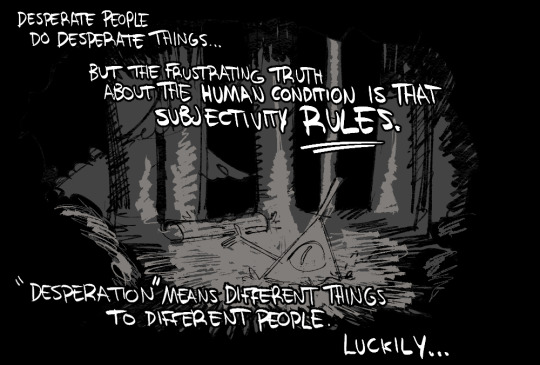


Part 1 | Next
[ASKBOX OPEN]
699 notes
·
View notes
Text
Toji headcanons

Toji loves your fiery, sassy attitude and secretly enjoys when you boss him around. He finds your stubbornness and quick wit irresistible. You both bicker like a power couple but it’s clear to everyone that you’ve got his heart on lock.
“Toji, I said I wanted hot fries, not these regular ones! Who told you to switch up?”
“I told myself. What you gon’ do, huh? Fight me?”
“Bet.”
You lost. Btw.
Toji’s got a thing for kissing you in public, especially when he notices anyone staring too long. He’ll grab your chin and pull you into a slow, passionate kiss just to show you off.
Which, we don't care.
“Toji, not here..?! People are watching!”
“Let ‘em watch. Gotta remind these fools who you belong to.”
“You so cocky.”
“Nah, just proud. You’re too fine to keep to myself.”
Before you can argue, he plants a kiss on you that leaves your knees weak.
At night, you’re wrapped in his arms while he tells you stories in that deep, husky voice about his bounties. He doing too much. But come morning, Toji’s all over you, teasing you with kisses and sly grins until you both end up “late” for the day.
“Yo, babe, wake up.”
“Toji, it’s too early for your mess.”
“Mess? Nah, I was just tryna see if you’re still mad I ate your leftovers.”
“You WHAT?!”
“Relax, baby. I’ll buy you more… at some point.”
#reading#books#book review#story ideas#original story#ts4 story#narrative#fantasy writing#stories#fiction#anime fanart#anime art#anime and manga#anime gif#anime#fat anime#toji fushiguro#toji x black reader#toji headcanons#jjk toji#toji smut#choso#toji x reader#toji x you
210 notes
·
View notes
Text
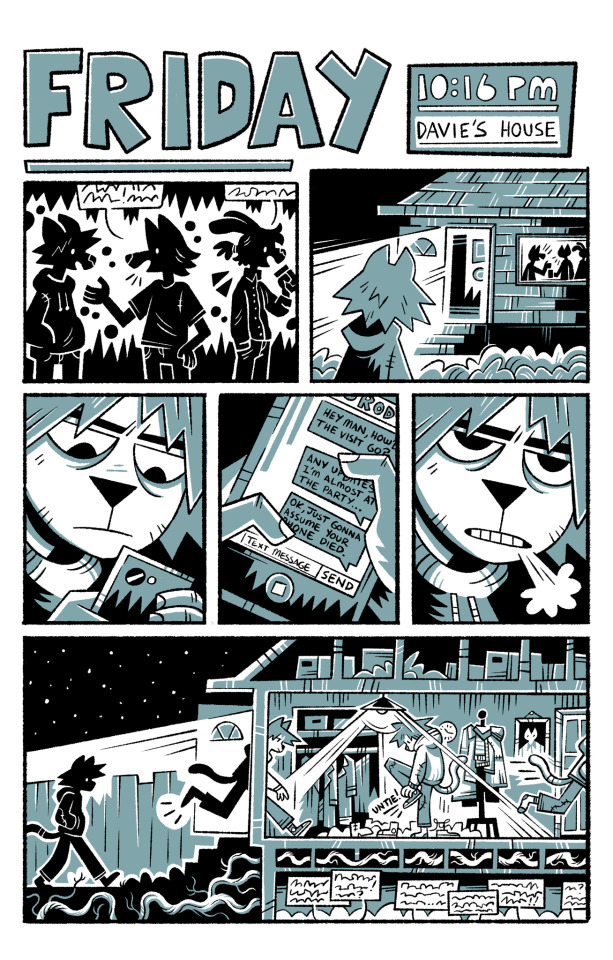
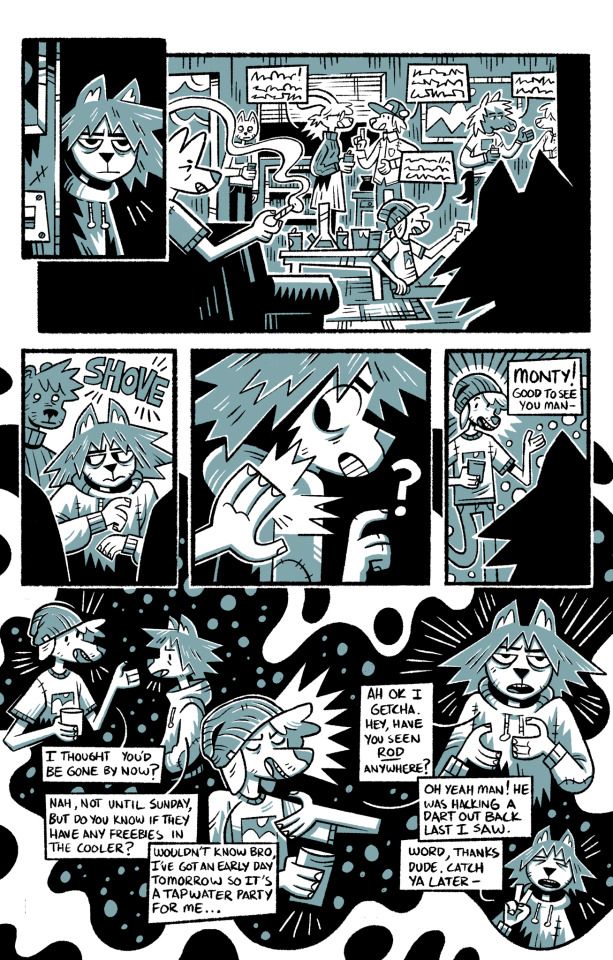
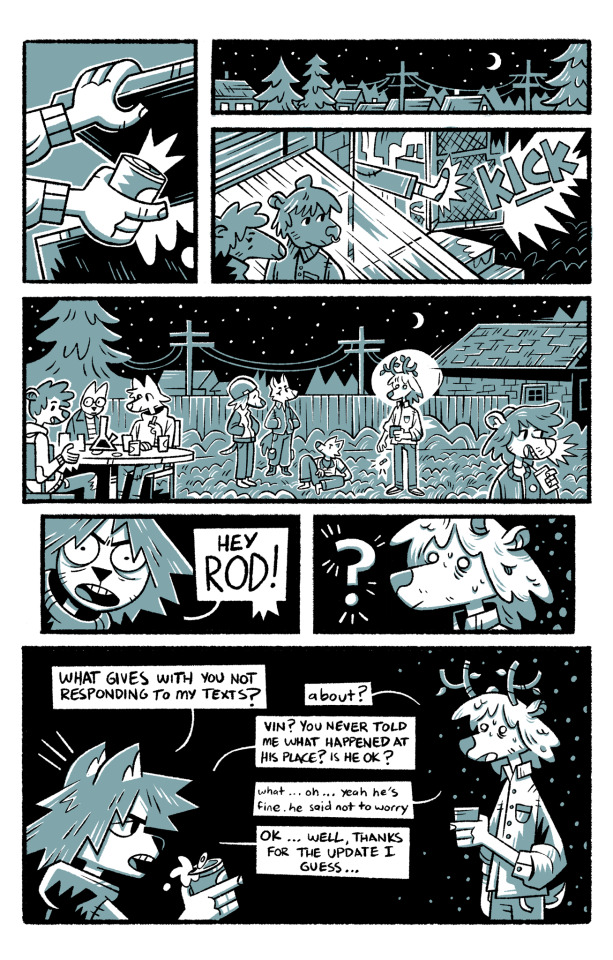

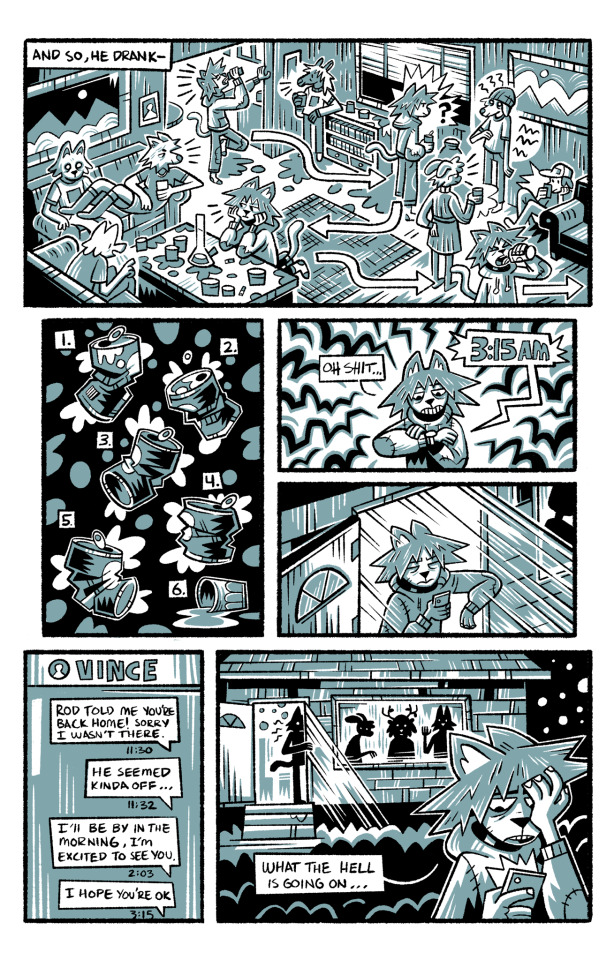
“The Wind Beneath the Aspens”
-5 page pitch created during August of this year
#illustration#sketchbook#anthro#art#drawing#procreate#furry art#furry#sketch#character design#comicart#comics#comic#webcomix#webcomic#narrative#cartoon#drugs cw#alcohol cw
1K notes
·
View notes
Text
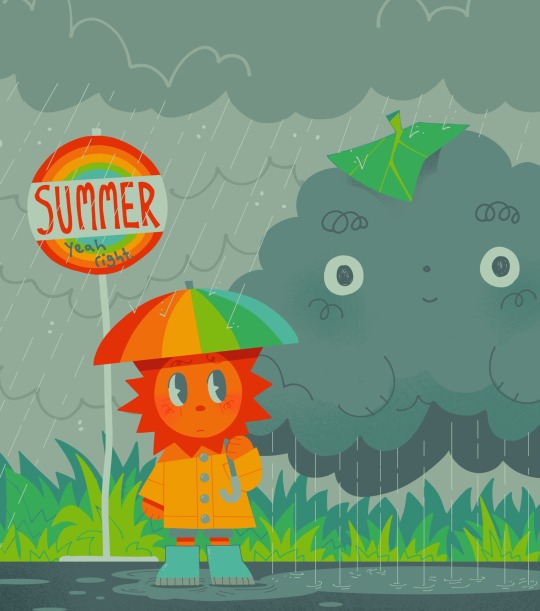
☔️ for my university’s newspaper! nz had a lot of rain last summer… 🌈
883 notes
·
View notes
Photo

"Letter from Home" by Jacob Lawrence, 1947
163 notes
·
View notes